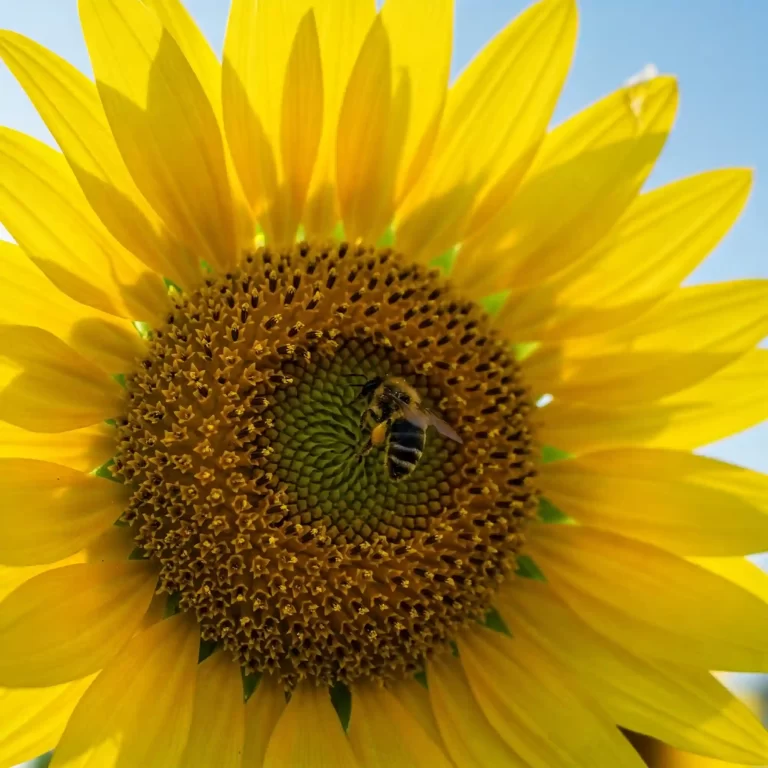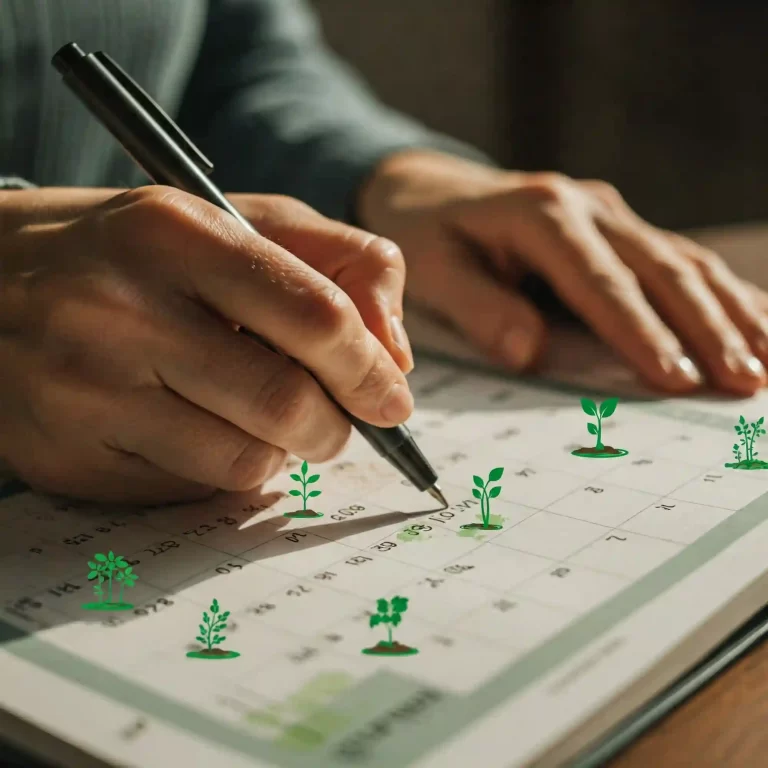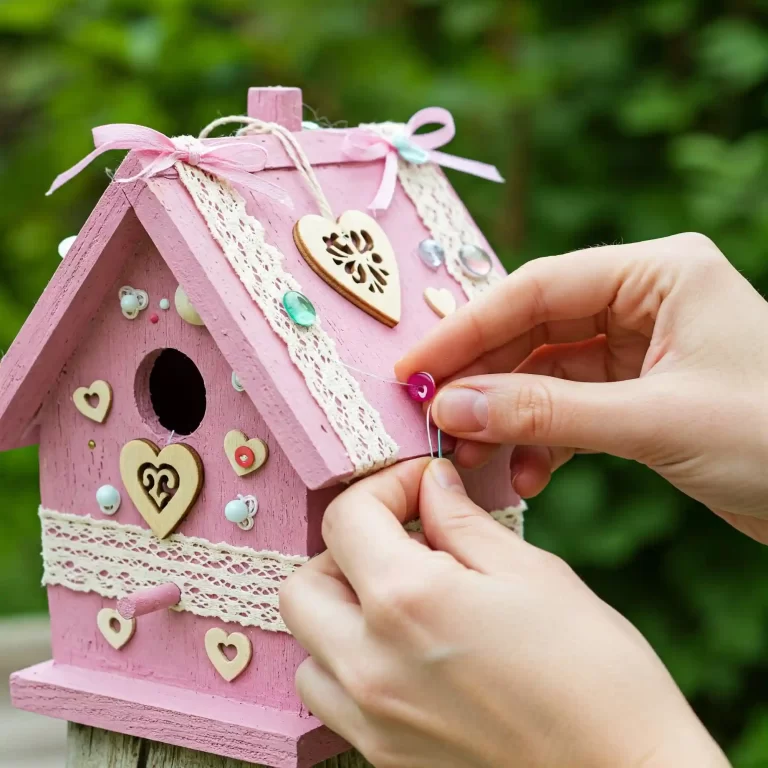| Key Takeaways |
|---|
| – Reproduction of living things is the process of creating new individuals of the same species from existing ones. |
| – There are two types of reproduction: asexual and sexual. Asexual reproduction produces genetically identical offspring, while sexual reproduction produces genetically unique offspring. |
| – Living things use behavioral and structural strategies to reproduce, such as mating rituals, courtship displays, pollination, seed dispersal, and fertilization. |
| – Genes, alleles, chromosomes, and DNA affect reproduction by determining the traits and variations of the offspring. |
| – Geneticists use Punnett squares to predict the traits of offspring based on the genes and alleles of the parents. |
| – Generation Genius is a website that provides video lessons and other educational resources on various science topics, including reproduction of living things. |
| – You can use Generation Genius to learn more about reproduction of living things by watching the video lesson, reading the reading material, taking the quiz, doing the activity, and exploring more. |
A Fun and Easy Way to Discover the Amazing World of Science
Did you know that some living things can reproduce without a partner? Or that some living things can change their sex to reproduce? Or that some living things can produce clones of themselves? If you are curious about these and other questions, you are in the right place. In this article, we will show you how to learn about reproduction of living things with Generation Genius, a website that provides video lessons and other educational resources on various science topics.
Reproduction of living things is the process of creating new individuals of the same species from existing ones. Reproduction is important because it allows living things to pass on their genes, traits, and adaptations to their offspring, which helps them survive and thrive in different environments. There are two types of reproduction: asexual and sexual. Asexual reproduction produces genetically identical offspring, while sexual reproduction produces genetically unique offspring. Living things use behavioral and structural strategies to reproduce, such as mating rituals, courtship displays, pollination, seed dispersal, and fertilization. Genes, alleles, chromosomes, and DNA affect reproduction by determining the traits and variations of the offspring. Geneticists use Punnett squares to predict the traits of offspring based on the genes and alleles of the parents.
If you want to learn more about reproduction of living things, you can visit the Generation Genius website and watch their video lesson on this topic. You can also read their reading material, which explains the concepts and vocabulary in more detail. You can also explore other related topics, such as animal and plant life cycles, which show how living things grow and change over time. Generation Genius is a great way to discover the amazing world of science!
In this article, we will show you how to use Generation Genius to learn about reproduction of living things. We will also give you some tips and tricks on how to make the most of your learning experience. By the end of this article, you will be able to answer some of the most common questions about reproduction of living things, such as: What are the two types of reproduction? How do living things reproduce asexually and sexually? What are the advantages and disadvantages of each type of reproduction? How do living things use behavioral and structural strategies to reproduce? How do genes, alleles, chromosomes, and DNA affect reproduction? How do geneticists use Punnett squares to predict the traits of offspring?
How to Watch the Video Lesson on Reproduction of Living Things
To watch the video lesson on reproduction of living things, you need to go to the Generation Genius website and log in with your account. If you don’t have an account yet, you can sign up for a free trial and get access to all the video lessons and other resources for 14 days. Once you are logged in, you can go to the Science Topics page and click on the Reproduction of Living Things icon. This will take you to the video lesson page, where you can watch the video, read the summary, and download the teacher guide and the DIY guide.
The video lesson on reproduction of living things is about 12 minutes long and it is hosted by Dr. Jeff, a scientist and an engineer who loves to teach science. In the video, Dr. Jeff explains the two types of reproduction: asexual and sexual. He also shows some examples of living things that reproduce asexually and sexually, such as bacteria, fungi, plants, animals, and humans. He also demonstrates how to use a Punnett square to predict the traits of offspring based on the genes and alleles of the parents. He also introduces some of the vocabulary and concepts related to reproduction of living things, such as chromosomes, DNA, fertilization, geneticist, and behavioral and structural strategies.
To make the most of your video lesson, you can do the following:
- Watch the video at your own pace and pause, rewind, or fast-forward as needed.
- Take notes of the main points and the vocabulary words.
- Use the subtitles and the transcript to help you understand the content and the pronunciation.
- Watch the video more than once to reinforce your learning and retention.
- Watch the video with a friend or a family member and discuss what you learned.
- Ask questions and share your opinions and feedback on the video.
How to Read the Reading Material on Reproduction of Living Things
To read the reading material on reproduction of living things, you need to go to the video lesson page and click on the Reading Material tab. This will open a PDF file that you can read online or download to your device. The reading material is about 10 pages long and it is written in a simple and engaging way. It is also aligned with the Next Generation Science Standards (NGSS) and the Common Core State Standards (CCSS) for grades 3-5.
The reading material on reproduction of living things is a more detailed and comprehensive version of the video lesson. It explains the concepts and vocabulary in more depth and provides more examples and illustrations. It also includes some fun facts and trivia about reproduction of living things, such as: How do strawberries reproduce? How do seahorses reproduce? How do octopuses reproduce? How do bananas reproduce? How do starfish reproduce? How do hydra reproduce? How do Komodo dragons reproduce? How do turkeys reproduce? How do mules reproduce? How do ligers reproduce?
To make the most of your reading material, you can do the following:
- Read the reading material before or after watching the video lesson to reinforce your learning and comprehension.
- Use the glossary at the end of the reading material to look up the definitions and pronunciations of the vocabulary words.
- Use the discussion questions at the end of the reading material to check your understanding and apply your knowledge.
- Use the explore more section at the end of the reading material to find more resources and activities on reproduction of living things.
- Read the reading material with a friend or a family member and discuss what you learned.
- Ask questions and share your opinions and feedback on the reading material.
How to Take the Quiz on Reproduction of Living Things
To take the quiz on reproduction of living things, you need to go to the video lesson page and click on the Quiz tab. This will open an online quiz that you can take on your device. The quiz has 10 multiple-choice questions and it is timed. You have 15 minutes to complete the quiz and you can only take it once. The quiz will test your knowledge and understanding of the concepts and vocabulary related to reproduction of living things. You will get instant feedback on your answers and your score.
The quiz on reproduction of living things covers the main points and the key terms from the video lesson and the reading material. It also includes some application and analysis questions that require you to use your critical thinking and problem-solving skills. Some of the questions that you may encounter in the quiz are: What is the difference between asexual and sexual reproduction? What are some examples of living things that reproduce asexually and sexually? What are the advantages and disadvantages of each type of reproduction? How do living things use behavioral and structural strategies to reproduce? How do genes, alleles, chromosomes, and DNA affect reproduction? How do geneticists use Punnett squares to predict the traits of offspring?
To make the most of your quiz, you can do the following:
- Review the video lesson and the reading material before taking the quiz to refresh your memory and prepare yourself.
- Read the questions carefully and eliminate the wrong answers.
- Use the process of elimination and logic to find the best answer.
- Don’t guess or leave any questions blank.
- Check your answers and your score and learn from your mistakes.
- Compare your score with your friends or family members and challenge them to take the quiz.
- Celebrate your achievements and reward yourself for your hard work.
How to Do the Activity on Reproduction of Living Things
To do the activity on reproduction of living things, you need to go to the video lesson page and click on the Activity tab. This will open a PDF file that you can read online or download to your device. The activity is a hands-on and fun way to learn about reproduction of living things. It is also aligned with the Next Generation Science Standards (NGSS) and the Common Core State Standards (CCSS) for grades 3-5.
The activity on reproduction of living things is called ‘Make Your Own Punnett Squares’. In this activity, you will learn how to use Punnett squares to predict the traits of offspring based on the genes and alleles of the parents. You will also learn how to use coins to simulate the random process of fertilization. You will need some materials for this activity, such as paper, pencil, scissors, and coins. You will also need a partner to do this activity with.
To make the most of your activity, you can do the following:
- Follow the instructions carefully and check your work as you go.
- Use the examples and the diagrams in the activity and the DIY guide to help you understand the concepts and the steps.
- Use the questions and the answers in the activity and the DIY guide to check your understanding and apply your knowledge.
- Do the activity with a friend or a family member and compare your results.
- Ask questions and share your opinions and feedback on the activity.
- Have fun and be creative with your Punnett squares and your coins.
How to Explore More on Reproduction of Living Things
To explore more on reproduction of living things, you need to go to the video lesson page and click on the Explore More tab. This will open a page that has more links and suggestions for you to learn more about reproduction of living things. You can also go to the Science Topics page and click on the Animal and Plant Life Cycles icon. This will take you to another video lesson and more resources and activities on how living things grow and change over time.
The explore more page on reproduction of living things has links to other websites, videos, games, books, and articles that you can use to learn more about reproduction of living things. You can also find some suggestions for science projects and experiments that you can do at home or at school. For example, you can grow your own plants from seeds or cuttings, observe the life cycle of a butterfly or a frog, or make your own DNA model. The animal and plant life cycles video lesson is another video lesson hosted by Dr. Jeff that explains how living things grow and change over time. He also shows some examples of animal and plant life cycles, such as mammals, birds, reptiles, amphibians, insects, flowers, and trees. He also introduces some of the vocabulary and concepts related to animal and plant life cycles, such as metamorphosis, germination, pollination, and seed dispersal.
To make the most of your exploration, you can do the following:
- Choose the resources and activities that interest you and suit your learning style and level.
- Use the same tips and tricks that you used for the video lesson, the reading material, the quiz, and the activity to enhance your learning and enjoyment.
- Use the explore more section at the end of the animal and plant life cycles video lesson and reading material to find more resources and activities on animal and plant life cycles.
- Explore more with a friend or a family member and discuss what you learned.
- Ask questions and share your opinions and feedback on the resources and activities.
- Be curious and adventurous and discover the amazing world of science.
Conclusion
In this article, we showed you how to use Generation Genius to learn about reproduction of living things. We also gave you some tips and tricks on how to make the most of your learning experience. We hope that you enjoyed this article and that you learned a lot about reproduction of living things. Reproduction of living things is a fascinating and important topic in science that helps us understand how living things survive and evolve. By using Generation Genius, you can learn more about reproduction of living things and other science topics in a fun and easy way.
If you want to learn more about reproduction of living things and other science topics, you can visit the Generation Genius website and sign up for a free trial or a subscription. You can also follow Generation Genius on social media and subscribe to their newsletter and YouTube channel. You can also share this article with your friends and family and let them know about Generation Genius. Thank you for reading this article and happy learning!



